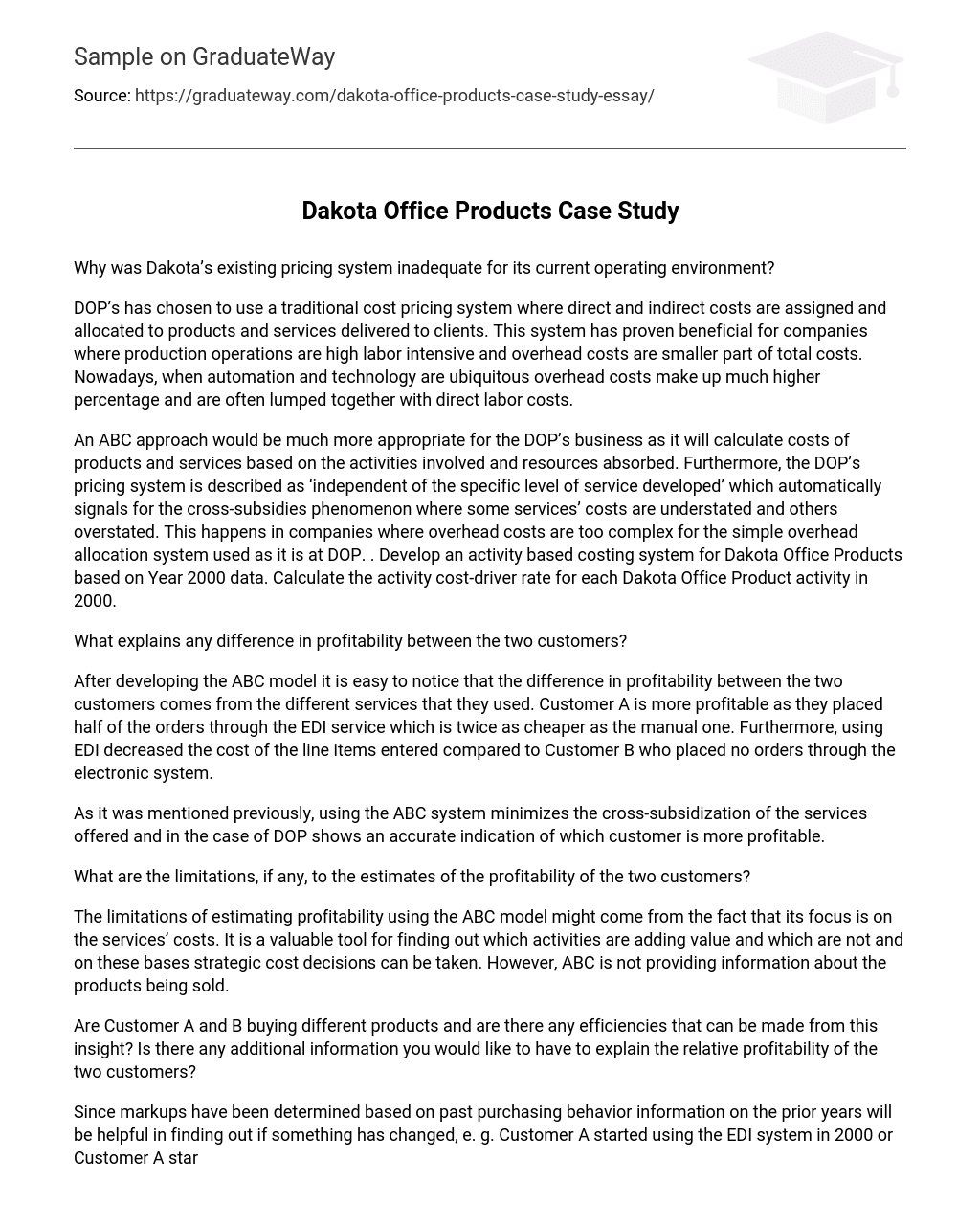Why was Dakota’s existing pricing system inadequate for its current operating environment?
DOP’s has chosen to use a traditional cost pricing system where direct and indirect costs are assigned and allocated to products and services delivered to clients. This system has proven beneficial for companies where production operations are high labor intensive and overhead costs are smaller part of total costs. Nowadays, when automation and technology are ubiquitous overhead costs make up much higher percentage and are often lumped together with direct labor costs.
An ABC approach would be much more appropriate for the DOP’s business as it will calculate costs of products and services based on the activities involved and resources absorbed. Furthermore, the DOP’s pricing system is described as ‘independent of the specific level of service developed’ which automatically signals for the cross-subsidies phenomenon where some services’ costs are understated and others overstated. This happens in companies where overhead costs are too complex for the simple overhead allocation system used as it is at DOP. . Develop an activity based costing system for Dakota Office Products based on Year 2000 data. Calculate the activity cost-driver rate for each Dakota Office Product activity in 2000.
What explains any difference in profitability between the two customers?
After developing the ABC model it is easy to notice that the difference in profitability between the two customers comes from the different services that they used. Customer A is more profitable as they placed half of the orders through the EDI service which is twice as cheaper as the manual one. Furthermore, using EDI decreased the cost of the line items entered compared to Customer B who placed no orders through the electronic system.
As it was mentioned previously, using the ABC system minimizes the cross-subsidization of the services offered and in the case of DOP shows an accurate indication of which customer is more profitable.
What are the limitations, if any, to the estimates of the profitability of the two customers?
The limitations of estimating profitability using the ABC model might come from the fact that its focus is on the services’ costs. It is a valuable tool for finding out which activities are adding value and which are not and on these bases strategic cost decisions can be taken. However, ABC is not providing information about the products being sold.
Are Customer A and B buying different products and are there any efficiencies that can be made from this insight? Is there any additional information you would like to have to explain the relative profitability of the two customers?
Since markups have been determined based on past purchasing behavior information on the prior years will be helpful in finding out if something has changed, e. g. Customer A started using the EDI system in 2000 or Customer A started placing larger and less frequent orders in 2000 thus different behavior has not affected profitability during the year.
Assume that Dakota applies the analysis done in Question 3 to its entire customer base. How could such information help the Dakota managers increase customer profits?
Applying the ABC system to the whole customer base can turn out very beneficial. Dakota managers might find out that some services are too costly, e. g. the desk top option. Having that information they can decide to scrap it or charge a higher markup. Furthermore, it appears that the EDI service is much cheaper than the manual entry order one. This insight can be used for making decisions in terms of pricing, investment or process improvement. Suppose that a major customer switched from placing all its orders manually to placing all its orders over the internet site.
How should this affect the activity cost driver rates calculated in Question 2? How should the switch affect Dakota’s profitability?
Following the logic from question 7 if all customers convert to using the EDI service will increase Dakota’s profitability immensely. Currently, EDI orders make up only 5% of the order entry expenses. If the activity quantity is increased the cost driver rate of $5 can go down substantially and bring more revenue for Dakota.





